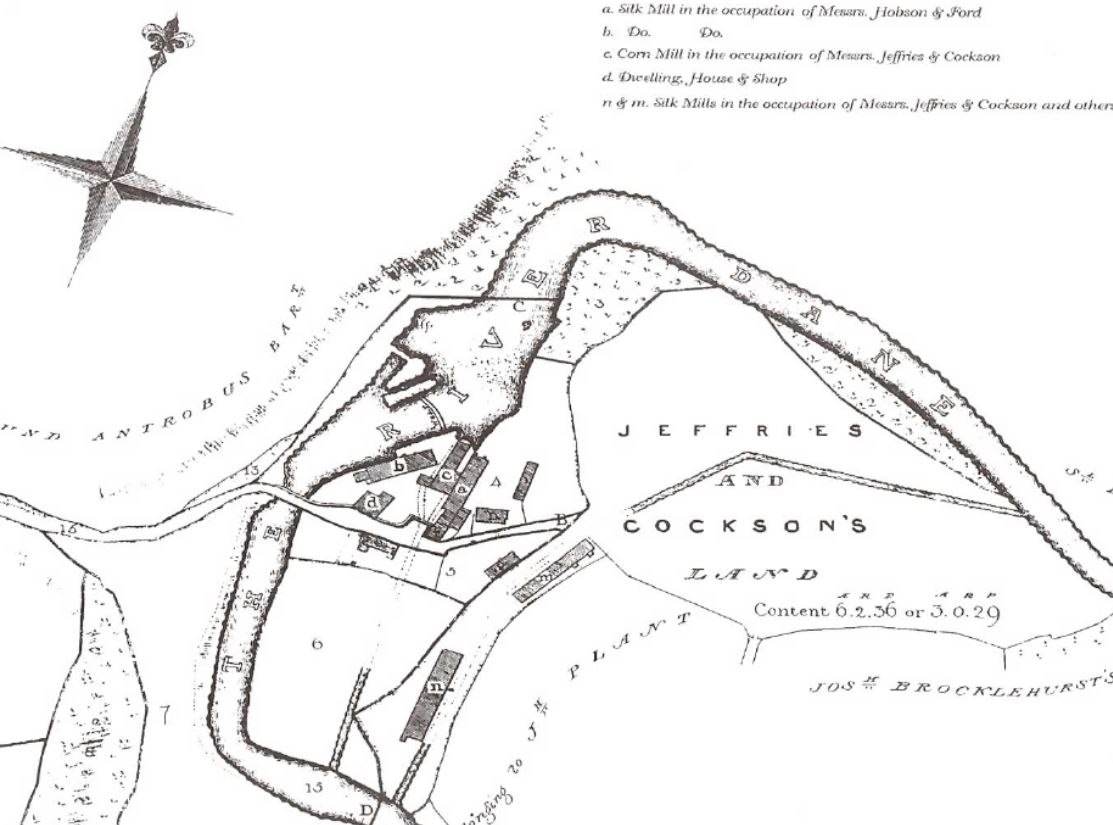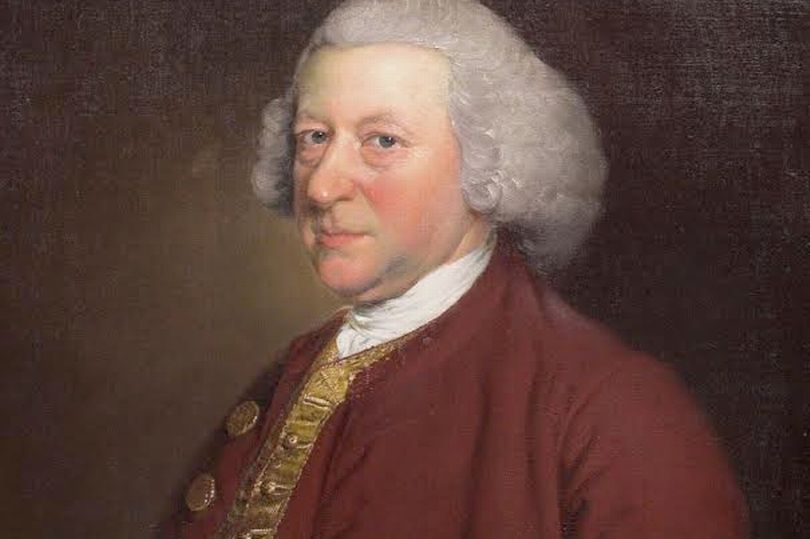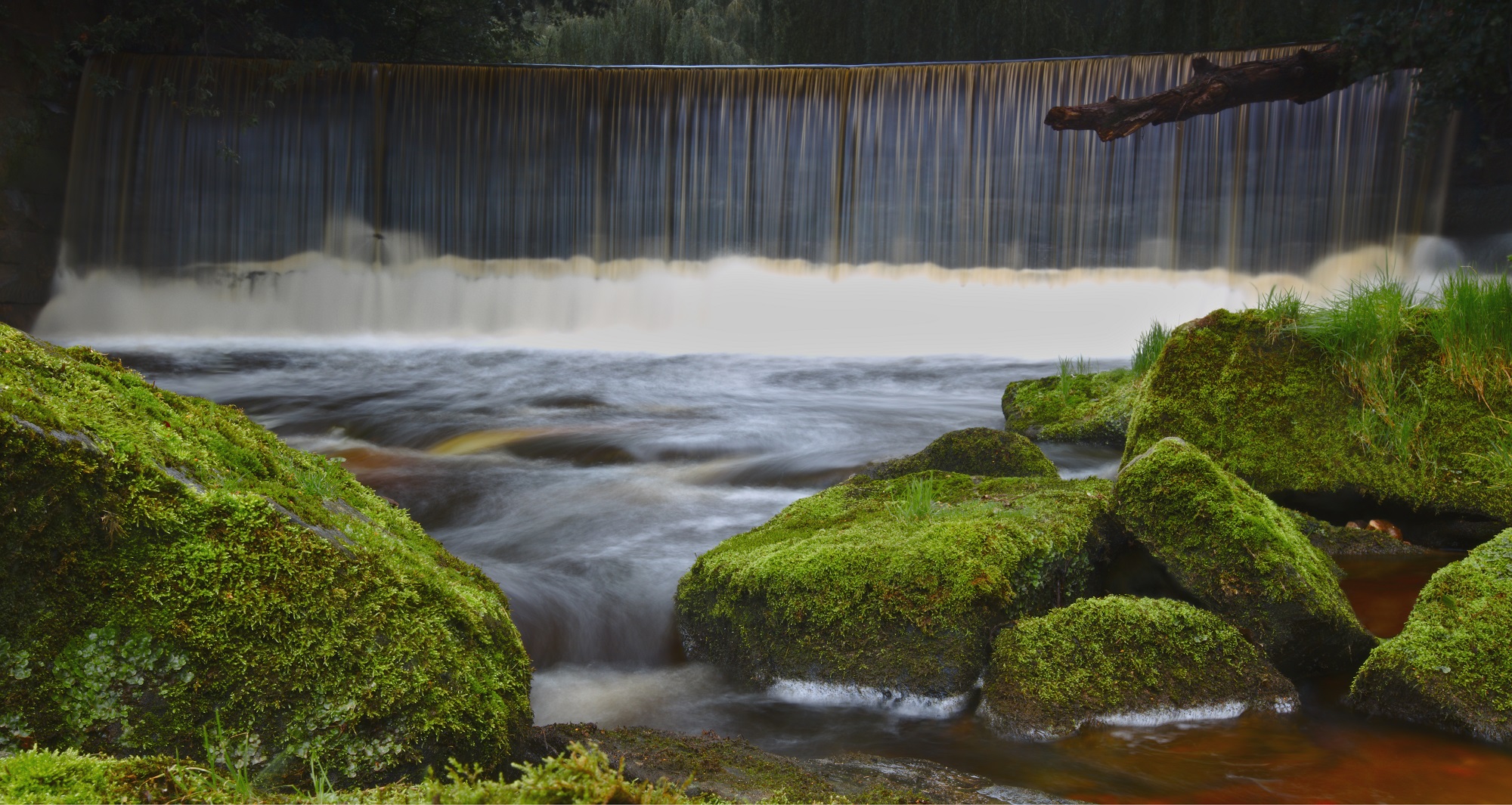Site History
250-year-old Weir Creating Renewable Energy for Generations to Come!
Water power on the River Dane has a long and distinguished history, greatly influencing the economic development of Cheshire. Indeed, there are believed to have been more than 80 watermills along the length of the Dane, from Hug Bridge to Northwich where it joins the River Weaver on its way to the Irish Sea.
Although there is still plenty of physical evidence of their existence, not least in the form of weirs, sadly the power of the Dane has run largely to waste since the 1960s. However, the need for clean, renewable power has brought about a renaissance in the form of small scale hydro-electricity and the Dane is awakening to carry out its work once again.
Congleton’s new hydro-electric scheme is being built on the River Dane at a site with a long history of using water power for productive purposes. Located about a mile upstream of Congleton town centre the area is known as ‘Havannah’ and it was created as a greenfield industrial settlement, in use from the 1760s until recent times.

The name ‘Havannah’ was given to the area by Charles Roe
Charles Roe, the original developer of the site, he gave the name ‘Havannah’ to celebrate the capture of Havana, Cuba, by the Royal Navy in 1762. Charles Roe was a Macclesfield industrialist with interests in silk, copper and brass. He also established another site further upstream on the River Dane at Bosley where industrial activity, but not hydro power, continues to this day.

learn more about charles roe
The Deserted Village
Various industries came and went over the next couple of centuries. It is believed that copper and brass work ceased by 1801 and there were periods of time when the site was virtually abandoned, only for a new activity to come along later. In the early 1800’s the Havannah site hosted a corn miller, silk throwing business and a tobacco manufactory, as well as numerous cottages for workers. Business seems to have enjoyed periods of good fortune punctuated by hard times. By 1898 times were so hard that Havannah was dubbed ‘The Deserted Village’, such was the abandonment. There were many changes of ownership, bankruptcies and major fires.
The last recorded business was the English Velvet Company which carried out fustian cutting until 1962, when the mills at Havannah finally closed for good. A catastrophic fire in 1972 destroyed the five storey Windsor Mill, but it was not finally demolished until 1988.
Some of the old cottages and mill buildings were refurbished and sympathetically modernised as dwellings to enjoy the riverside setting and give new life to old industrial buildings. In 2014 a new housing development was created at Havannah Village, surrounded on three sides by the River Dane, once again changing the character of this adaptable site.
Water Power Machinery
Various types of machines have been used at Havannah over the centuries of industrial use. Precise details have been obscured by the passage of time, but historians have worked hard to give some intriguing glimpses into the past. In 1801, for example, the site is recorded to have had “five waterwheels from 18 feet to 25 feet diameter with the head and fall of 13 feet 3 inch and the whole of the River Dane for supply”. This head accords with that provided by the existing weir, a Grade 2 listed structure, which forms an integral part of the new hydro scheme, suggesting that it may date from the earliest use of the site. However, the presence of concrete within the structure indicates that the weir itself may have been rebuilt, or at least significantly modified, in the years since 1762!

Havannah Ahead Of Its Time!
Early use of the water power was purely mechanical, driving grinding stones and other contemporary machinery. However, the businesses at Havannah were very resourceful, adding electrical generators for battery charging and lighting in the early 1900s. Public electricity supplies did not reach Congleton until 1931, so the Dane became even more useful than before.
The introduction of velvet production in the 1920s demanded much more electricity and so the waterwheels were replaced by an 80hp turbine, manufactured by the renowned Gilbert Gilkes & Co of Kendal, who are still in business. Electricity was supplied to the local cottages some years before it arrived in the rest of Congleton, making Havannah ahead of its time. However, once mains electricity arrived in the district, the days of the turbine generator were numbered since it wasn’t compatible with the mains standard electricity.
We do not know the exact date when the Dane ceased to be gainfully employed at Havannah but, although known as a lively river and prone to flash floods, it has served the people of Congleton very well for hundreds of years. With the new Congleton Hydro scheme at Havannah, the Dane can once again serve the inhabitants of the town.
A very comprehensive history of the area’s water power heritage can be found in the excellent book ‘Driven by the Dane’ by local writer Tony Bonson.
Get In Touch
Dane Valley Community Energy Ltd is a Community Benefit Society registered with the Financial Conduct Authority (FCA - Registration Number 7142) as defined by the Cooperatives and Community Benefit Societies Act, 2014 and governed by rules which can be viewed HERE.
